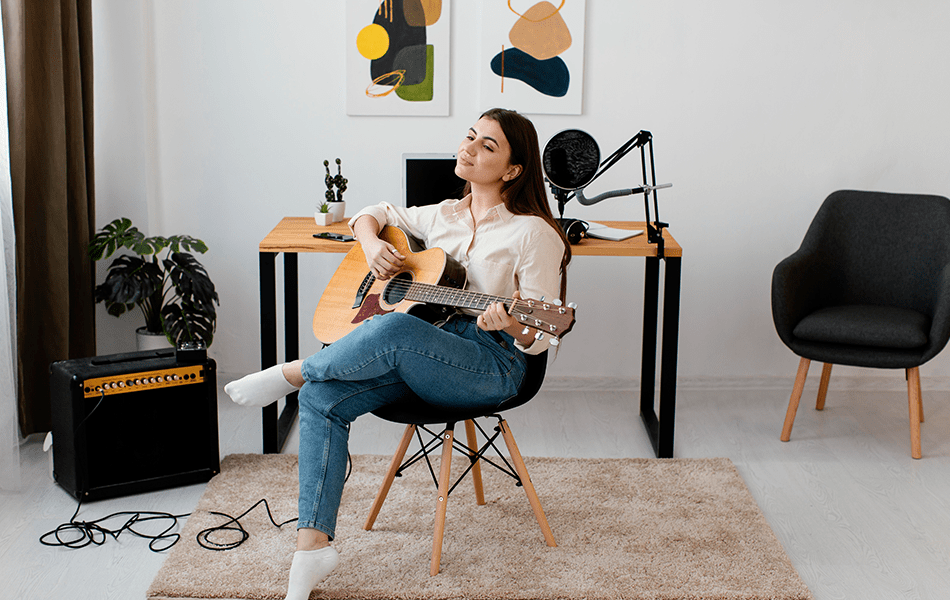Do you have a noisy house that drives you crazy? In this article, you’ll find information on how to soundproof your home. Includes details on the propagation of noise and the use of soundproofing to dampen or eliminate it and find peace and quiet at home.
Let’s face the truth about noise: Modern homes are noisier than ever before because of lightweight building materials, open floor layouts, and the prevalence of noisy machines and loud entertainment equipment. It can be intolerable if a home doesn’t have any kind of soundproofing.
The neighbors are another consideration. It’s even more challenging to quiet down noisy neighbors in close quarters in homes or in a community. How do you prevent noise from outside from entering a room?
First, though, we’ll examine the dynamics of sound to learn how to manipulate it more precisely.
How Sound Works

Sound is essentially the energy released when an object vibrates, resulting in waves in the surrounding air. The eardrum is a sensitive membrane that picks up air vibrations and transmits that information to the brain, where it is interpreted as distinct tones.
The wavelengths of bass frequencies are very long, while those of treble frequencies are very short. The characteristics of these sounds change depending on the medium they encounter. It’s considerably more challenging to muffle a mid-range discussion than it is to drown out the thumping bass of a neighbor’s subwoofer.
Sound transmission properties are modified by the surface’s homogeneity. When two parallel walls are hard and flat, the result might be an eerie echo that lasts for a while. A surface’s ability to reflect sound decreases in direct proportion to its softness and uniformity. Sound is less likely to bounce back and forth across rooms if their walls are not parallel.
How to Soundproof a Room
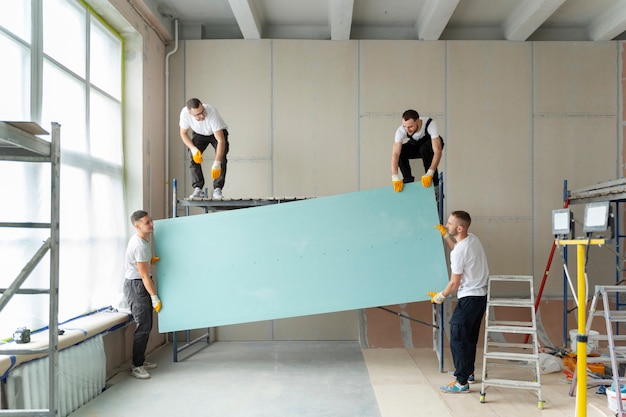
Here is a quick rundown on how to soundproof a room:
- Find out the sounds you want to muffle.
- Rugs and upholstered furniture are good examples of soft, sound-absorbing materials.
- Think about installing acoustic tiles on the walls to soundproof a room.
- The door seals should be soundproofed.
- Put in acoustic blankets or window inserts to muffle outside noise.
- Learn more about how to build soundproof walls, ceilings, and floors.
Let’s get into the specifics now.
Reduce unwanted noise with some home soundproofing. If you want to silence something, you should ask yourself, “What noise do I want to control?”
There are two main approaches to noise reduction:
- Modifying the volume and character of sounds produced at home and
- Isolating yourself from unwanted outside sounds
Both of these methods entail suppressing echoes and preventing the spread of unwanted noise.
There are two main methods for limiting the spread of noise:
- sound-absorbing, and
- Sound blocking
The ability to absorb sound prevents it from reflecting off of nearby surfaces.
Home Soundproofing involves using materials and techniques that prevent or significantly lessen the transmission of sound.
The use of both noise-blocking and sound-absorbing materials and methods is optimal for home soundproofing.
Materials that absorb sound from the inside and outside can be used in conjunction with sound blockers to keep unwanted sounds from outside from reverberating through a space.
Sound-absorbing materials and Techniques
Soft surfaces and materials are the most effective at absorbing sound, which reduces the volume of noise-making echoes and reverberations. Rugs, lined drapes, and comfy chairs are all examples of soft furnishings found in the average living space. Hard surfaces such as hardwood, tile, and laminates increase the amount of sound that travels across a room.
Acoustic Foam and Tiles
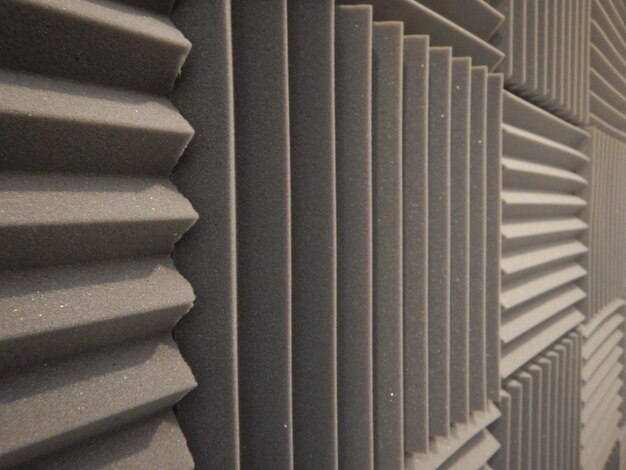
But there’s more that you’re capable of! The quality of sound in a space can be vastly improved by using acoustic foam or other sound-absorbing materials. Sound-absorbing materials prevent sounds from echoing around a room; they are often porous, lightweight, and soft to the touch. This is why you’ll find them in places like recording studios, music rooms, and podcasting booths, where they help reduce distortion caused by reflected sound. They are equally effective at dampening sound in a busy family room or a loud basement playroom.
Therefore, acoustic tiles are a wonderful option for dampening echoes. However, many people wonder if installing foam acoustic panels or tiles on walls will help cut down on noise pollution.
The explanation is that they prevent sound from reverberating, but they won’t be very successful at preventing background noise.
Studio-grade sound isolation can be achieved with soundproof acoustic panels. These foam tiles, designed to muffle noise in your home theater, come in a rainbow of colors.
Soundproofing for Recording or Podcasting

It is less likely that sound will bounce back and forth across rooms if the walls are not perpendicular to one another. This is why areas where noise reduction is crucial, including recording studios, home cinemas, and music practice rooms, should choose home soundproofing materials with irregular shapes like angles, curves, or ridges.
Soundproofing is an art form for those who are constructing a home recording studio.
Weather Stripping for Doors and Windows
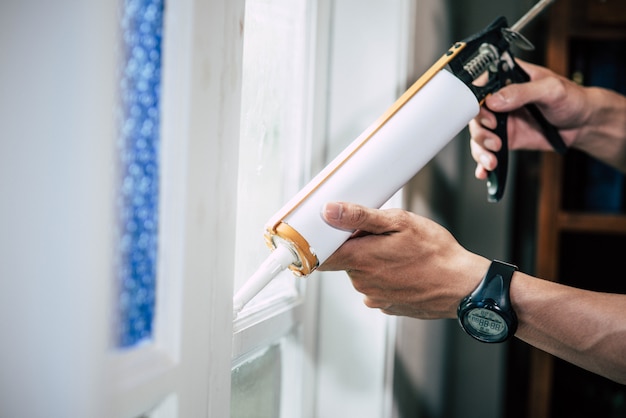
A door’s construction is irrelevant so long as it can be accessed, right? Similarly, if there are crevices around the door’s perimeter or between the door’s threshold and the floor, noise can readily seep in.
The door’s fit into the jamb must be snug. Seal its edges with weather stripping. Sealing around a door’s perimeter with rubber or vinyl bulb weather stripping and a door-bottom weather stripping sweep does a good job of obstructing sound.
Consider an automatic door sweep that only seals the bottom of the door when it is closed if you require a door sweep that doesn’t drag along the floor. An acoustic door seal kit, suitable for use in a recording studio, is available for purchase online.
Acoustic Wall Construction Techniques
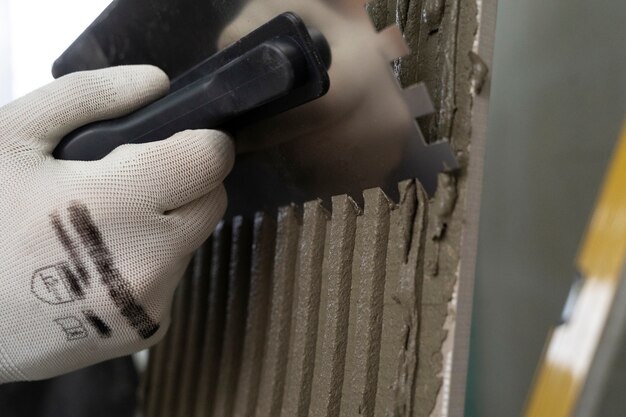
Additional measures must be taken during wall construction to improve the sound absorption efficiency of walls and ceilings and achieve higher values. Here are a few options:
- The studs for the walls are metal. Metal wall studs are useful.
- Two layers of drywall. Adding a second layer of 5/8-inch drywall to each side of the wall is another option for improving performance. This increases the surface’s bulk, making it less resonant and less likely to transmit sound waves.
- Sound isolation systems. Mounting 1/2-inch gypsum wallboard on customized resilient channels or clips that span the wall is an even more efficient method of building interior walls. These channels or clips effectively dampen sound, preventing it from passing through the wall studs.A layer of drywall is typically attached to a flange on the channels rather than the studs. Using insulation, channel-mounted wallboard, and a double coating of 1/2-inch gypsum on one side.
- Staggered wall studs A wall with angled studs might be thought of as belonging to the same general class. A wall constructed of 2-by-4 studs, staggered along 2-by-6 bottom and top plates, and insulated with two layers of fiberglass, but at the expense of additional work and frame material. Each surface of the wall is attached to its own separate stud, so sound cannot flow through the walls.
- Fireblocking. Remove fireblocking from interior walls if doing so is permitted by local building laws and safety regulations. These horizontally installed, small blocks between wall studs are excellent noise conductors. Check with the local building department if you’re considering removing them.
Ceiling Sound Absorption
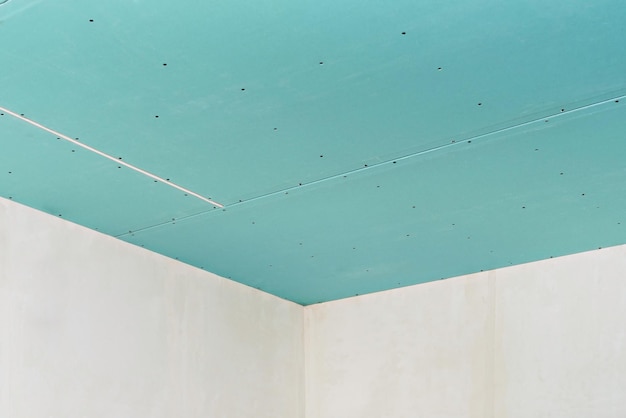
An acoustic ceiling can be installed to reduce noise in a space that is below an existing ceiling.
The manufacturers have a variety of acoustic ceiling materials that are widely used to reduce sound transmission between floors and between rooms.
The acoustic qualities of drop-ceiling systems and acoustic tiles are second to none.
You may be relieved to know that they are not required to have an institutional look. Those who find the standard designs of acoustic ceilings to be too clinical may prefer one of the many contemporary options.
As with the rest of the house, the best way to reduce noise from entering the ceiling is to utilize a combination of noise-blocking and noise-reduction techniques.
How to Soundproof a Window
There are a wide variety of sources of noise that can invade your home, including neighbors who are too loud, passing vehicles, animals, leaf blowers, lawnmowers, pumps, airplanes, and construction.
What can be done, though?
The answer may depend heavily on the nature of the noise and the extent to which you are willing to expend effort and money in order to reduce it.
Replacing Windows with Soundproof Windows
It might be a significant, though costly, step to replace old, single-pane windows with modern, double-pane soundproofing windows.
Windows that are good for the environment and those that block out noise are two whole different things. Argon gas and low-E glazing have little effect on the acoustical properties of a window. What makes a window safe are its thickness, the quantity of air space between its panes, and the stability of its frame.
Since traditional single-pane windows are so ineffective at blocking noise, they are often the primary focus of soundproofing efforts.
Window Soundproofing Panels and Acoustic Quilts
Acoustic curtains are a low-cost option for dampening ambient noise and cutting down on some echoes inside a room. But don’t get your hopes up too high, because they won’t do a particularly good job of blocking out sound.
Curtains designed to reduce noise both inside and out accomplish just that.
Selecting curtain sizes that extend from ceiling to floor will maximize the acoustic benefits. They ought to reach out a couple of inches past a window’s frame at the very least.
Lastly, be sure to check out Bria Homes for affordable house and lot and to find the perfect home for you and your family. Choose Bria Homes as your home of choice.
Written by Darlene Semera


